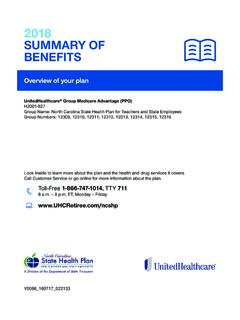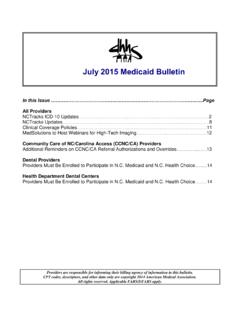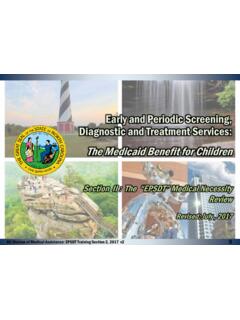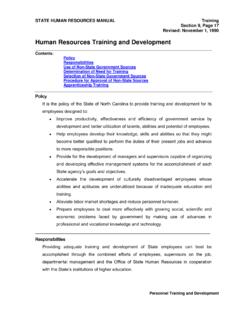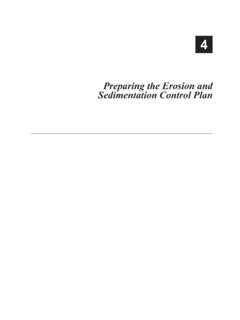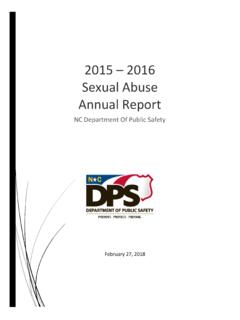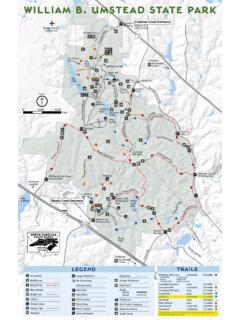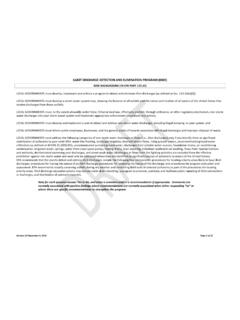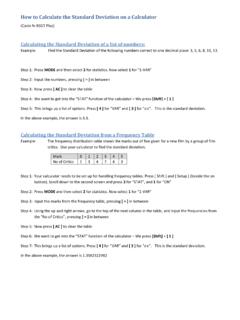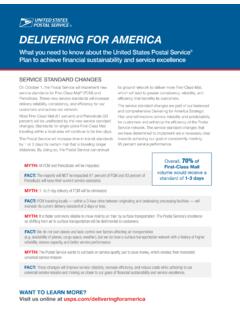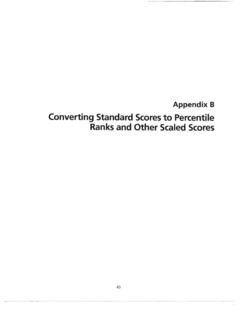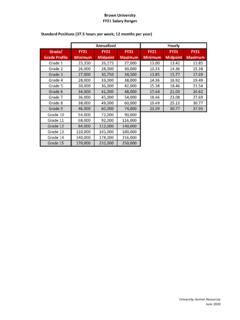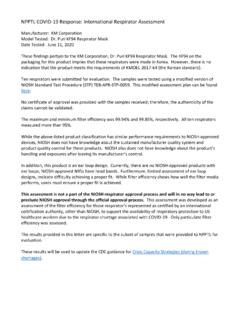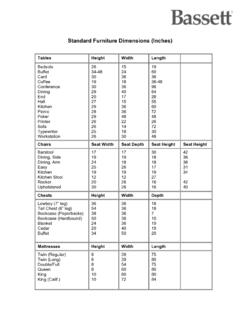Transcription of English Language Arts North Carolina Standard Course of Study
1 North Carolina Standard Course of Study English Language Arts For Implementation 2018-2019 April 2017 KINDERGARTEN READING STRAND: K-12 standards for Reading define what students should understand and be able to do by the end of each grade. Students should demonstrate their proficiency of these standards both orally and through writing. For students to be college and career ready, they must read from a wide range of high-quality, increasingly challenging literary and informational texts. One of the key requirements of the standards for Reading is that all students must be able to comprehend texts of steadily increasing complexity as they progress through school.
2 Students should also acquire the habits of reading closely and independently for sustained periods of time. They need to connect prior knowledge and experiences to text. They must also show a steadily growing ability to discern more from and make fuller use of text. Reading standards for Literature Key Ideas and Evidence With prompting and support, ask and answer questions about key details in a text. With prompting and support, retell familiar stories, including key details. With prompting and support, identify characters, settings, and major events in a story. Craft and Structure With prompting and support, ask and answer questions about words in a text that suggest feelings or appeal to the senses.
3 Recognize common types of texts. With prompting and support, define the role of the author and illustrator in telling the story. Integration of Ideas and Analysis With prompting and support, describe how the words and illustrations work together to tell a story. Not applicable to literature. With prompting and support, compare and contrast the adventures and experiences of characters in familiar stories. Range of Reading and Level of Complexity Actively engage in group reading activities with purpose and understanding. KINDERGARTEN Reading standards for Informational Text Key Ideas and Evidence With prompting and support, ask and answer questions about key details in a text.
4 With prompting and support, identify the main topic and retell key details of a text. With prompting and support, describe the connection between two individuals, events, ideas, or pieces of information in a text. Craft and Structure With prompting and support, ask and answer questions about words in a text. Identify the front cover, back cover, and title page of a book. With prompting and support, define the role of the author and illustrator in presenting the ideas or information in a text. Integration of Ideas and Analysis With prompting and support, describe how the words and illustrations work together to provide information. Begins in grade 1. With prompting and support, identify basic similarities in and differences between two texts on the same topic.
5 Range of Reading and Level of Complexity Actively engage in group reading activities with purpose and understanding. KINDERGARTEN READING FOUNDATIONAL SKILLS: The foundational skills are directed toward fostering students understanding and working knowledge of concepts of print, the alphabetic principle, and other basic conventions of the English writing system, including handwriting. These foundational skills are necessary and important components of an effective, comprehensive reading program designed to develop proficient readers with the capacity to comprehend texts across a range of types and disciplines. A systematic approach to handwriting instruction (manuscript and cursive) in the elementary grades is essential for students to communicate their ideas clearly.
6 To achieve handwriting proficiency, students need to apply their handwriting skills to authentic writing activities. Instruction in the foundational skills should be differentiated. The point is to teach students what they need to learn and not what they already know to discern when particular children or activities warrant more or less attention. Reading standards for Foundational Skills Print Concepts Demonstrate understanding of the organization and basic features of print. words from left to right, top to bottom, and page by page. that spoken words are represented in written Language by specific sequences of letters. that words are separated by spaces in print.
7 And name all upper- and lowercase letters of the alphabet. Handwriting Print upper- and lowercase letters. Phonological Awareness Demonstrate understanding of spoken words, syllables, and sounds (phonemes). and produce rhyming words. , pronounce, blend, and segment syllables in spoken words. and segment onsets and rimes of single-syllable spoken words. and pronounce the initial, medial vowel, and final sounds (phonemes) in three-phoneme (consonant-vowel-consonant, or CVC) words. (This does not include CVCs ending with /l/, /r/, or /x/.) or substitute individual sounds (phonemes) in simple, one-syllable words to make new words. KINDERGARTEN Phonics and Word Recognition Know and apply grade-level phonics and word analysis skills in decoding words.
8 Basic knowledge of one-to-one letter-sound correspondences by producing the primary sound or many of the most frequent sounds for each consonant. the long and short sounds with common spellings (graphemes) for the five major vowels. common high-frequency words by sight. between similarly spelled words by identifying the sounds of the letters that differ. Fluency Read emergent-reader texts with purpose and understanding. KINDERGARTEN WRITING STRAND: To be college and career ready, students should learn how to offer and support opinions/arguments, demonstrate understanding of a topic under Study , and convey real and/or imagined experiences. Students learn that a key purpose of writing is to communicate clearly and coherently.
9 The NC ELA Writing standards emphasize the importance of writing routinely in order to build knowledge and demonstrate understanding. The complete writing process (from prewriting to editing) is clear in the first three writing standards . These standards define what students should understand and be able to do by the end of each grade. Writing standards Text Types, Purposes, and Publishing Use a combination of drawing, dictating, and writing to compose opinion pieces in which they tell a reader the topic or the name of the book they are writing about and state an opinion or preference about the topic or book. guidance and support from adults, respond to questions and suggestions from adults and/or peers and add details to strengthen writing as needed.
10 Use a combination of drawing, dictating, and writing to compose informative/explanatory texts in which they name what they are writing about and supply some information about the topic. guidance and support from adults, respond to questions and suggestions from adults and/or peers and add details to strengthen writing as needed. Use a combination of drawing, dictating, and writing to narrate a single event or several loosely linked events, tell about the events in the order in which they occurred, and with guidance and support, provide a reaction to what happened. guidance and support from adults, respond to questions and suggestions from adults and/or peers and add details to strengthen writing as needed.
